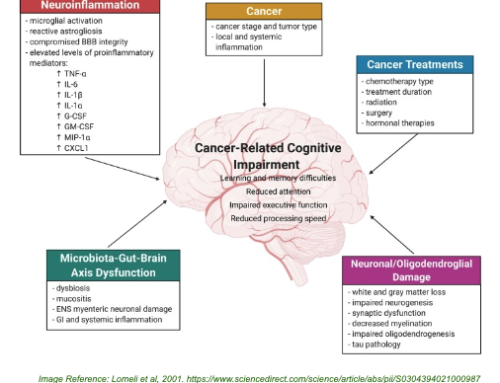Telehealth is improving access to healthcare services, especially for those living in regional, rural and remote areas. The benefits are clear and numerous:
Issues of remoteness and timeliness of care impacts many Australian healthcare consumers. Gloria, a teacher living and working in remote far north Queensland, was struggling with fatigue, weight loss and ongoing signs of psychological stress, having recently completed active treatment for breast cancer. Gloria required comprehensive specialist supportive care services and extended follow-up care. Challenged by common obstacles faced by many consumers restricted by geographical remoteness, Gloria was connected directly with her cancer care support team via a telehealth virtual clinic service.
Telehealth is a recognised means of delivering individual and team based support for complex conditions, including specialist access for key conditions such as oncology. Instead of the frequent 550km round journey to services in her nearest major city, Gloria’s post-treatment needs were met via regular video calls and remote telemonitoring. The reduced travel, increased convenience and ability to remain connected with her local community meant that Gloria could reinvest her time and energies into family and social relationships, returning to work, and pursuing interests.
Where multiple trips to different providers may have been the historical norm, telehealth services are now delivering integrated and multidisciplinary care direct to consumers, whenever and wherever convenient.
Research has shown telehealth to be as effective at improving quality of life and supportive care outcomes as those receiving in person care. Driven by such evidence, increasing numbers of healthcare professionals, including dieticians, physiotherapists, exercise physiologists, speech pathologists, psychologists and care coordinators, are using virtual health clinics to deliver quality care that best aligns with consumer needs and preferences. The scenarios are diverse and the possibilities endless:
Growth in telehealth
Telehealth is not new. Services have been in place for well over a decade. We need only look to States and Territories with significant issues of remoteness, such as Queensland, Northern Territory and Western Australia, for examples of coordinated telehealth services. So if it’s not new, why then the recent attention and increased uptake of telehealth services?
Did you know: In 2017, telehealth saved WA country patients from travelling 27.3 million kilometres. That’s to the moon and back 35 times! source
The Digital Revolution
Growth in telehealth services can be attributed in part to the significant and ongoing advancement of communication and digital technologies. Along with greater affordability, there has been exponential uptake of smart phones and other personal devices, broadband internet, and wireless technologies. Together with the implementation of shared electronic health records, telemonitoring and other digital health tools, all of this means that telehealth has become a more feasible option for both consumers and providers.

Empowered Consumers
Health is also undergoing a dramatic culture shift that’s redefining roles and consumer participation. Gone is the old adage of ‘doctor knows best’, where by health providers were thought to possess all information and control. A patient or person-centred approach has redressed the focus, positioning the consumer as partner and active participant in decision making and care planning. The healthcare provider role has become more akin with that of partner, mentor or coach. In place of paternalistic care that restricts individual self-efficacy, new models of care are empowering consumers by being responsive to their need and preferences, and valuing the contributions of their personal health experiences.
For the approximately two-thirds of cancer patients who continue working after their diagnosis or return to work after primary treatment, telehealth options and telemonitoring tools can help to make outpatient follow-up and rehabilitation seamless. Living well with cancer is more relevant now as survival rates of many cancer types are increasing. Hence the growing emphasis on supportive care and wellness programs delivered at home and into the community.
Overcoming Inequity
Here in Australia, we face a number of challenges with regards to equity of access to healthcare services. Large geographical distances and demographic spread mean barriers and complexities of access, especially for those outside of large metropolitan centers, our aging and indigenous populations, and the increasing number of those living with chronic disease. Actions that widen access to telehealth services, especially in rural and remote Australia, is an important component of the National Digital Health Strategy.
Helping to overcome the tyranny of distance, telehealth is currently being used to deliver quality health services to care homes and nursing facilities, and integrating care within communities. Telehealth services focusing on Aboriginal and Torres Strait Islander communities are providing timely access to healthcare services to ensure early diagnosis and early interventions. Within acute care facilities, telehealth is enabling remote specialist team assessment of critically ill patients, fostering collegiate decision making, and encouraging knowledge sharing and medical advice for patients with complex conditions.
Did you know: There are over 60 thousand residential aged care places in NSW alone, and 25% of residents have at least one hospital encounter per year. Source

What can we expect next?
This is an exciting time for health! Digital technologies are diverse and their possibilities for health and healthcare delivery are rapidly evolving. Pools of digital health data are growing exponentially, feeding new knowledge and insights that can ultimately inform predictive and personalised care. All of this means tremendous things for maintaining wellness and delivering individualised healthcare that keeps people out of hospital and engaged in an active life.
We increasingly use video calls in everyday life to connect and maintain relationships and many expect virtual care to play a bigger part in our lives. As consumers constantly seek more accessible, convenient and flexible service options, the health industry will continue to look to other service sectors, such as banking and travel, for innovative ideas and lessons learnt.
We can expect service providers to increase their offerings in response to a competitive consumer driven market. Fueled by the increasing popularity of mobile devices and apps, wearable devices, online health information and networking portals, consumer appetite for new products and services is driving providers to reconsider what has long been ‘business as usual’. Growing levels of consumer digital and data literacy will continue to stimulate expansion and advancement of digital health tools and services.
Health and services data will continue to inform evidence based multi-professional tailored programs, in particular pre-treatment and post-treatment care, telemonitoring, preventative health and wellness support. Data will also continue to inform the development and review of guidelines and clinical standards that help healthcare providers deliver online care effectively, efficiently and safely.
Just like digital health care is simply becoming known as ‘health care’, we’re rapidly on our way to telehealth services becoming just another standard option for accessing quality healthcare.
To learn more about how digital healthcare works and some of our success stories, check it out here: https://valionhealth.com.au/for-individuals/



